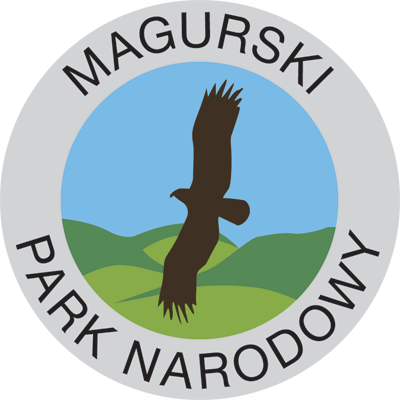Magurski National Park was established on November 24, 1994. Its activity began on 1 January 1995, a of the sixth national park in the Polish Carpathians. Park covers the entire area of 19 439 ha, of which 89.7% is located in the Podkarpackie province (Krempna, Dukla, New Żmigród, Osiek Jasielski, Dębowiec municipalities) while the remaining 10.3% in the Małopolskie province (Sękowa and Lipinki). Park’s protection zone holds a coverage area of 22 969 ha.
Park’s strict protection zone is covered by approx. 12.4% of its entire area, active protection is carried out in the area of approx. 87% of the surface and applies to both forest and non-forest ecosystems. of the landscape protection area comprises 0.3% of the Park land.
Magurski National Park was established in order to:
- preserve the ecosystem of the primeval forest,
- protect rich and diverse fauna of the forest,
- protect interesting outcrop of rock, rich in various forms of weathering (what makes the very area considered as a unique class rock formation spot in Beskid Niski region)
- maintain extensive, semi-natural grasslands and pastures with the characteristic, undeveloped landscape,
- obtain within few decades a sustainable water management in the areas of spring river Wisłoka
A considerable number of rare and endangered plants, including 71 protected species, proves the very floral value of the park .
Among the 64 species taken under strict protection we can find monkshood: pockmarked and Moldovan, deadly nightshade, autumn crocus, goat's beard, blechnum spicant, stemless carline thistle, 20 species of orchids, Deptford pink, daphne and 4 species of lycopodiophyta. As a result of the research conducted within the Park Protection Plan scientists have also discovered the presence of 188 species of mosses, including 4 of the "red list", 51 species of liverworts, 85 species of slime molds and 461 species of macrofungi, including 98 protected species, rare and endangered ones.
Backwoods Magura is famous for rich populations of large vertebrates. 60 species of mammals, including 10 species of bats live here. Land predators such as bear, wolf, badger, lynx, wildcat, fox, otter, pine marten, domestic marten, polecat, ermine, weasel can be spotted here. Among the ungulates of the MNP we can observe deer (Cervus and Capreolus) along with wild boars . Beavers were introduced here in the eighties and managed to colonize numerous tributaries of Wisłoka.
Among larger rodents squirrel and muskrat are also to be found here, along with other small mammals. Alpine shrew, pygmy shrew, Mediterranean water shrew and Eurasian water shrew, lesser white-toothed shrew, bicolored shrew are indeed worthy mentioning, along with harvest mouse, dormouse, and smudge. 10 species of mammals living in the Magurski National Park are on the list of the "Polish Red Red List of Threatened Species ". Avifauna’s survey confirmed the existence of 160 species of birds, including 117 nesting ones, among which 8 species has finds its place in the "Polish Red Red List of Threatened Species ". Among birds worthy mentioning are: golden eagle, eagle owl, boreal owl, pygmy owl, Ural owl (approx. 60 pairs / 100 km2 - one of the largest densities in Europe), white-backed woodpecker, three-toed woodpecker and lesser spotted eagle. Magurski National Park is well known for its birds of prey, of which lesser spotted eagle - considered as a symbol of the Park - nests here in numbers more than of 20 pairs, which makes MPN one of the greatest densities of this very species in Poland. Park is also proud of having the highest density of common buzzard breeding population (60 pairs / 100 km2). Among other interesting species scientists can notice black stork, honey buzzard, the corncrake, gray wagtail, dipper and two species of flycatcher: half-collared flycatcher and red-brested flycatcher.
There are following methods of protection within the Park:
1. Strict protection, where nature is "governed" by its own laws, eternally determined by the forces of nature without any aspect of human intervention. Currently, there are three areas of strict protection: - Magura Wątkowska ( 1,188.69 ha) - Kamień (pow. 377.93 ha),
- Zimna Woda (pow. 841.11 ha)
Those areas are typically dominated by old growth forests of primeval character which holds high or very high values.
2. Active protection involves the usage of specific conservation measures in order to restore the ecosystem (with its elements like: natural habitats, habitats of plants, animals and fungi) to the state of a natural ecosystems.
As far as the forest ecosystems are concerned an example of the active protection are the works involving the removal of trees interfering in the growth of valuable species and help in restoration of stands mostly with fir.
3. Protection of landscape consists in maintaining the characteristics of the landscape, permitting limited economic use of agricultural land, as well a land use aimed at achieving the objectives of protecting the National Park.
There are 10 labeled hiking trails with a total length of approximately 94 km available for tourists at Magurski National Park. In addition to hiking trails MPN’s visitors can go on one of the four natural paths and trails for biking and equestrian. One of the statutory activities of the park is to conduct environmental education. Employees conduct educational classes at the John Szafrański Educational Centre in Krempna, as well as across all the Park’s land.
Find out more on:
http://www.magurskipn.pl/en
